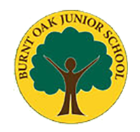Computing
At Burnt Oak Junior School, we are passionate about offering a rich, balanced computing curriculum that equips children with the digital skills they need in an ever-changing world. Our goal is to help pupils become confident, responsible, and respectful users of technology, fully prepared to thrive in the digital age.
Computing at Burnt Oak Junior is led by a dedicated specialist who delivers engaging and carefully planned lessons tailored to each year group. These sessions inspire curiosity, develop critical thinking, and offer hands-on experiences with a wide range of digital tools.
We set high expectations for all our learners, ensuring they access a broad range of computing topics that deepen their understanding of how technology works and how it connects with everyday life.
Using the NCCE (National Centre for Computing Education) scheme of work alongside the International Primary Curriculum (IPC), our pupils gradually build and strengthen their digital knowledge as they move through the school. By aligning our curriculum with the National Curriculum and keeping it regularly updated, we ensure children receive an education that is both relevant and forward-thinking. Our computing journey is carefully sequenced to build upon prior learning, allowing for continuous growth in both skills and confidence.
To promote safe and informed use of technology, we deliver E-safety education through the Kapow scheme, which offers structured and up-to-date content on staying safe online. Each year, pupils build on their understanding of digital responsibility, ensuring they are well-prepared for the online world.
Our computing curriculum supports more than just digital skills – it nurtures creativity, collaboration, and problem-solving. It also contributes to pupils’ wider personal development by encouraging ethical thinking, social awareness, and respect for others. By providing a safe space to explore, experiment, and express themselves, we help children unlock their potential and imagine new possibilities for the future.
To view the E Safety Policy, please click on the policies tab.

